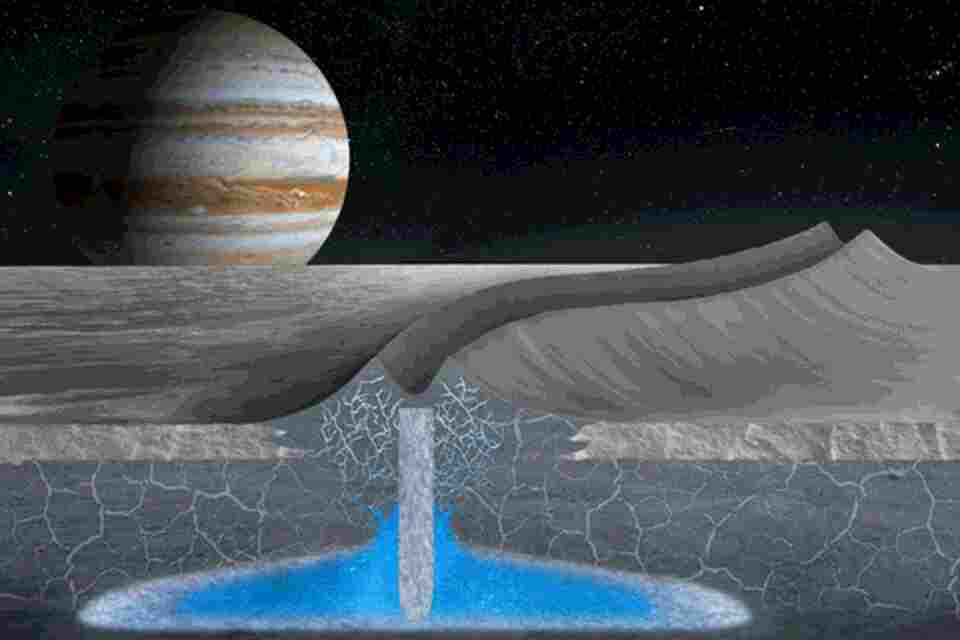Technology
Jupiter’s icy moon might have alien LIFE hidden inside hidden ‘water pools’, scientists reveal

JUPITER’S moon Europa has an icy shell that may be habitable for extraterrestrial life, new research says.
Europa’s double-ridged icy surface could be indicative of ample liquid water, according to a new study published in the journal Nature Communications.
JOVIAN moon Europa has an icy shell that may be habitable for extraterrestrial life, new research says.
The Jovian moon has long been considered an ideal candidate for life because it may harbor the essential ingredients to sustain it, such as water, chemistry, and energy.
However, the moon is surrounded by an icy shell estimated to be 20-30 km thick, which prevents researchers from observing it properly.
Now, increasing evidence shows that Europa’s vast ice covering may be habitable because it possesses an interesting feature: Double ridges.
Scientists are hypothesizing that these double ridges, which appear as 1000-ft-long gashes across the moon’s surface, may host a lot of water underneath.
And they are basing this on what we already know about our own Greenland, which has the same type of icy surface.
Using surface elevation and radar sounding data, scientists were able to deduce that Greenland’s double ridges were formed by successive refreezing, pressurization, and the fracturing of shallow water sills within the ice sheet.
The study noted if the same process is responsible for Europa’s double ridges, then shallow liquid water may be “spatially and temporally ubiquitous across Europa’s ice shell.”
“In Greenland, this double ridge formed in a place where water from surface lakes and streams frequently drains into the near-surface and refreezes,” said lead study author Riley Culberg, a Ph.D. student in electrical engineering at Stanford.
Most read in Tech
“One way that similar shallow water pockets could form on Europa might be through water from the subsurface ocean being forced up into the ice shell through fractures—and that would suggest there could be a reasonable amount of exchange happening inside of the ice shell.”
Initially, the researchers were conducting a study on climate change, until their findings surprised them.
“We were working on something totally different related to climate change and its impact on the surface of Greenland when we saw these tiny double ridges—and we were able to see the ridges go from ‘not formed’ to ‘formed,’ ” said study senior author Dustin Schroeder, an associate professor of geophysics at Stanford University’s School of Earth, Energy & Environmental Sciences.
Scientists called the findings significant because, even though the double ridges on Europa have been studied for over 20 years, this is the first time they have observed something similar on Earth, according to study co-author Gregor Steinbrügge, a planetary scientist at NASA’s Jet Propulsion Laboratory (JPL).
“We are making a much bigger step in the direction of understanding what processes actually dominate the physics and the dynamics of Europa’s ice shell,” Steinbrügge said.
Nasa researchers have speculated in the past that a salty ocean lies beneath Europa’s surface which contains more water “than Earth’s oceans combined.”
Read More on The US Sun
Furthermore, because Jupiter has such a powerful gravitational pull, it can create tides on Europa that produce heat.
The US space agency is due to launch a new mission designated “Europa Clipper” in October 2024 to investigate the Galilean moon that circles Jupiter every 83 hours.
We pay for your stories!
Do you have a story for The US Sun team?
Email us at exclusive@the-sun.com or call 212 416 4552.
Like us on Facebook at www.facebook.com/TheSunUS and follow us from our main Twitter account at @TheSunUS